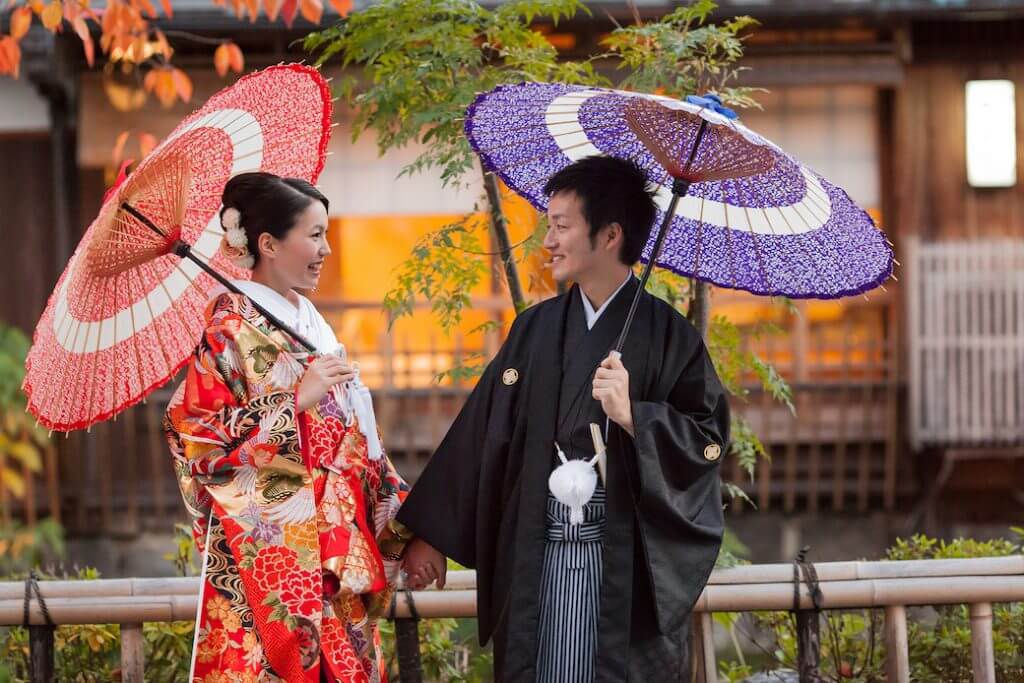Traditional Japanese Wedding
I have been very lucky this month to travel to Japan, and discover the incredible culture and peaceful atmosphere that emanates from everywhere. Respect, politeness and tradition are essential here. While exploring the island of Kyushu & Honshu, I stumbled upon so many exquisitely designed and sophisticated chapels that I was compelled to learn more about Japanese wedding traditions. While many Japanese couples are looking for a modern western type ceremony and consider ancient beliefs and customs to be old-fashioned– traditional ceremonies are still quite popular and commonplace.
Japanese marriage was a family affair, it was common for families to find a person whom they could trust to serve as a matchmaker ( nakoudo ). This custom is called the Omiai. I quickly developed a greater understanding of the Disney movie Mulan ! Ensuring that both potential bride and groom were trustworthy and properly educated was an important task. Once everything was approved by the matchmaker, the groom ( shinrou ) would be presented to the the bride ( shimpu ). Wedding invitations would be sent out to guests in the parents’ names. The first ceremony was religious, and was attended only by family members. The ceremony was followed by cocktails and then the rest of the guests were invited into the celebration. It is still strongly recommended for guests to give envelopes with money to the couple called Goshuugi. In return, guests would receive expensive favors or small gifts called hikidemono. To ensure future good fortune, expensive dishes like sea breams and tiger prawns were served in abundance at the reception.
The traditional Shinto-style wedding has recently come back into fashion. It is still attended by close family of the bride and groom with the larger reception being held afterwards. The couple wear silk kimonos and a shinto priest ( kannushi ) officiates the ceremony. It begins with the harai-gushi ceremony, during which he waves strips of white paper attached to stick 3 times to purify the room and the guests. The traditional costumes worn are both intricate and flamboyant. The bride wears a wig and cover her face with a pale white make-up which helps to hide her features from public view. She wears a tsuno-kakushi ( horned type hat ) which is said to hide the bride’s ‘horns of jealousy »–an ancient tradition that dates back to the 14th century Muromachi period when upper-class women would cover their heads when venturing outside. During the ceremony, the couple drinks from a small cup of sake that ‘seals’ the marriage. In order to ward off any evil spirits and attract the attention of the deities, the couple claps twice at the end of the ceremony and invite all the guest to do the same. This is similar to when the Japanese people clap twice at the shinto shrine before offering a prayer.



